Laser weapons: technology, history, status, prospects. Part of 1
The creation of a real laser in the 50-x - 60-s of the XX century again raised the topic of laser weapons. For decades, it has become an indispensable attribute of science fiction films. Real success was much more modest. Yes, lasers occupied an important niche in reconnaissance and target designation systems, are widely used in industry, but their power was still insufficient for use as a means of destruction, and their weight and size characteristics are unacceptable. How did laser technology evolve, how ready are they for military use now?
The first active laser was created in 1960 year. It was a pulsed solid-state ruby laser. At the time of creation, it was the highest technology. Nowadays, such a laser can be assembled at home, and its pulse energy can reach 100 j.
The nitrogen laser is even simpler to implement, it does not require complex purchased products, it can even work on nitrogen contained in the atmosphere. With straight arms, it can be easily assembled at home.
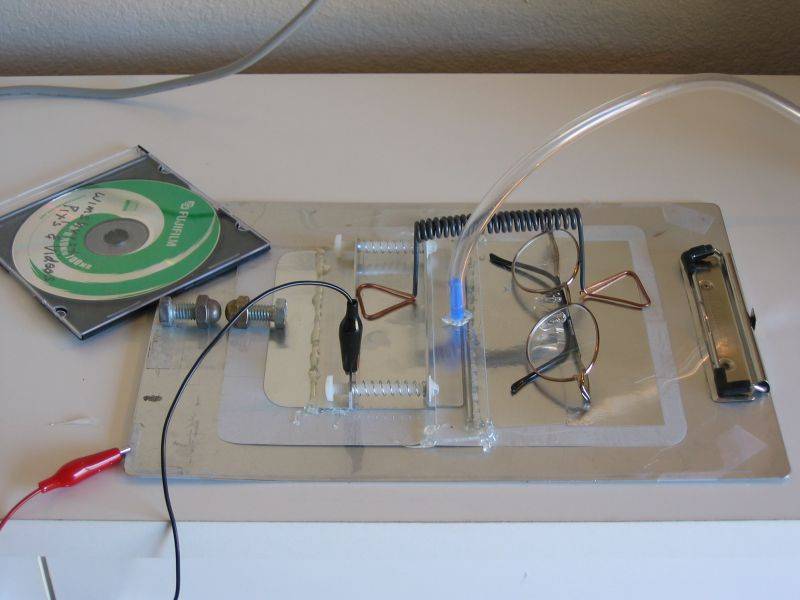
The process of self-assembly and demonstration of the nitrogen laser
Since the creation of the first laser found a huge number of ways to produce laser radiation. There are solid-state lasers, gas lasers, dye lasers, free electron lasers, fiber lasers, semiconductor and other lasers. Also, lasers differ in their mode of excitation. For example, in gas lasers of various designs, the excitation of the active medium can be carried out by optical radiation, discharge of electric current, chemical reaction, nuclear pumping, thermal pumping (gas dynamic lasers, GDL). The advent of semiconductor lasers gave rise to DPSS (Diode-pumped solid-state laser) diode-pumped lasers.
Various designs of lasers make it possible to obtain radiation of different wavelengths, from soft X-rays, to infrared radiation. Lasers emitting hard X-rays and gamma lasers are under development. This allows you to select the laser on the basis of the problem being solved. Regarding military use, this means, for example, the possibility of choosing a laser, with radiation of a wavelength that is minimally absorbed by the planet's atmosphere.
Since the development of the first prototype, the power has continuously grown, the weight and size characteristics and the efficiency of lasers have improved. This is clearly seen in the example of laser diodes. In the 90-ies of the last century, laser pointers with a power of 2-5 mW appeared on the market; in 2005-2010, you could already buy a laser pointer 200-300 mW; W. In Russia, in the open market there are modules of infrared laser diodes with fiber-optic output, optical power 2019 W.
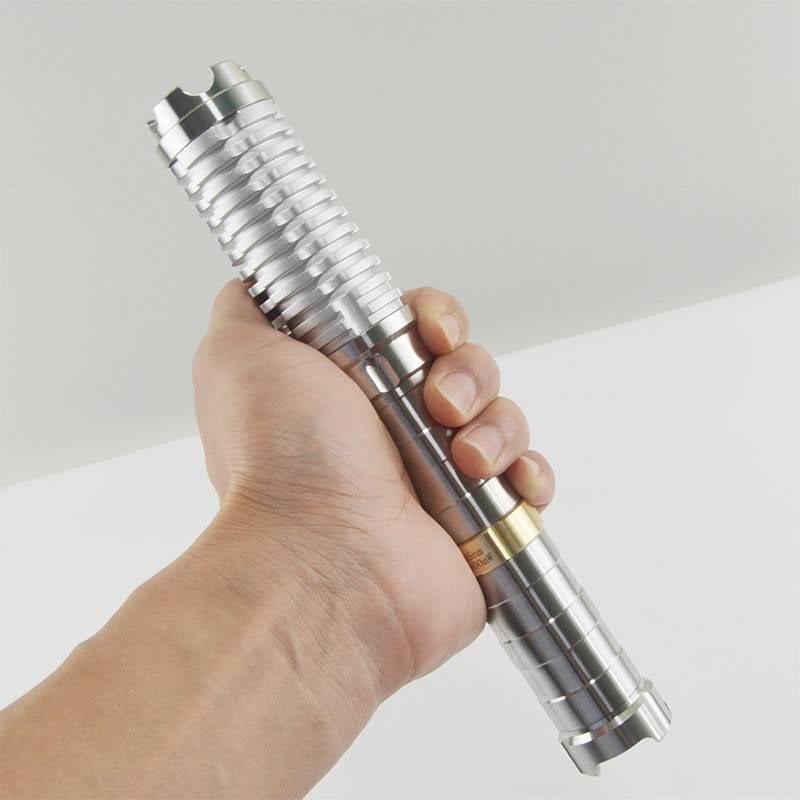
The growth rate of the power of laser diodes is comparable to the growth rate of the computing power of the processors, in accordance with Moore's law. Certainly laser diodes are not suitable for creating combat lasers, but they, in turn, are used to pump efficient solid-state and fiber lasers. For laser diodes, the efficiency of conversion of electrical energy into optical energy can be in excess of 50%, theoretically it is possible to obtain efficiency and in excess of 80%. High efficiency not only reduces power supply requirements, but also simplifies the cooling of laser equipment.
An important element of the laser is the beam focusing system - the smaller the spot area on the target, the higher the power density that allows damage. Progress in the creation of complex optical systems and the emergence of new high-temperature optical materials allows us to create highly efficient focusing systems. The system of focusing and targeting the American experimental combat laser HEL includes 127 mirrors, lenses and light filters.
Another important component that provides the possibility of creating a laser weapon is the development of systems for targeting and keeping the beam on the target. To hit targets with an “instant” shot, in a split second, gigawatt powers are needed, but creating such lasers and power sources for them on a mobile chassis is a matter of the distant future. Accordingly, to destroy targets with hundreds of kilowatt lasers - tens of megawatts, it is necessary to hold a spot of laser radiation on the target for some time (from several seconds to several tens of seconds). This requires high-precision and high-speed drives capable of tracking a laser beam on a target, according to the guidance system.
When firing at long ranges, the guidance system must compensate for the distortions introduced by the atmosphere, for which several lasers of various purposes can be used in the guidance system, ensuring accurate targeting of the main “combat” laser to the target.
What lasers have received priority development in the field of armaments? Due to the absence of powerful sources of optical pumping, these were primarily gas-dynamic and chemical lasers.
At the end of the 20th century, public opinion stirred up the American Strategic Defense Initiative (PIO) program. Under this program, the deployment of laser weapons on the ground and in space was supposed to destroy the Soviet intercontinental ballistic missiles (ICBM). For placement in orbit, it was supposed to use nuclear-pumped lasers emitting in the X-ray range or chemical lasers up to 20 megawatts.
The PIO program faced numerous technical difficulties and was closed. At the same time, some of the research carried out within the framework of the program made it possible to obtain sufficiently powerful lasers. In 1985, a deuterium fluoride laser with an 2,2 megawatt output power destroyed a liquid ballistic missile fixed in the 1 kilometer from the laser. As a result of the 12-second exposure of the rocket's hull wall, they lost strength and were destroyed by internal pressure.
In the USSR, combat lasers were also developed. In the eighties of the 20th century, work was carried out on the creation of the Skif orbital platform with a gas-dynamic laser with an 100 kW power. The Skif-DM mass-dimensional model (the Polyus spacecraft) was put into Earth orbit in the 1987 year, but due to a number of errors it did not reach the calculated orbit and was flooded along the ballistic trajectory in the Pacific Ocean. The collapse of the USSR put an end to this and similar projects.
Large-scale studies of laser weapons were carried out in the USSR under the Terra program. The program of the zonal anti-missile and anti-space defense system with a radiation damaging element based on high-power laser weapons “Terra” was implemented from 1965 to 1992. lasers.
Also in the USSR, from the middle of the 70 of the 20th century, an A-60 airborne laser-based complex was developed on the basis of the Il-76MD aircraft. Initially, the complex was designed to combat automatic drifting balloons. A continuous gas-dynamic megawatt class CO laser developed by the Khimavtomatika design bureau (KBKHA) was to be installed as a weapon.
As part of the test, a family of GDL bench samples was created with radiation power from 10 to 600 kW. It can be assumed that at the time of testing the A-60 complex, a laser with a power of 100 kW was installed on it.
Several dozens of flights were performed with testing of a laser system on a stratospheric balloon, located at an altitude of 30-40 km and on a target La-17. In terms of sources, it is indicated that the A-60 aircraft complex was created as an aviation laser missile defense component under the Terra-3 program.
In February, 2010 was reported in the media about the resumption of work on airborne laser weapons on the IL-76MD-90А platform with PS-90А-76 engines. Concern VKO "Almaz-Antey", TANTK named after GM. Beriev and the Khimpromavtomatika enterprise in Voronezh were given the task of creating an aviation complex with a “laser capable of burning airplanes, satellites and ballistic missiles”. The Il-76MD-90А aircraft, re-equipped for this purpose, made its first flight in October 2014, and on November 24 2014 arrived in Taganrog to install a laser complex. The finalization of the vehicle and its ground testing continued for two years, and on October 4 of 2016, the media passed a message about the start of flight tests of the successor to the A-60. As follows from the words of the Deputy Minister of Defense of the Russian Federation, Yuri Borisov, “flight experiments continue, the results of which confirm the correctness of the decisions taken”.
What types of lasers are the most promising for military applications at the present time? With all the advantages of gas-dynamic and chemical lasers, they have significant drawbacks: the need for consumable components, start-up inertia (according to some data up to one minute), significant heat generation, large dimensions, the output of spent components of the active medium. Such lasers can be placed only on large carriers.
At the moment, solid-state and fiber lasers have the greatest prospects, for operation of which it is only necessary to provide them with electric power of sufficient power. The US Navy is actively working on free-electron laser technology. The important advantages of fiber lasers include their scalability, i.e. the ability to combine multiple modules for more power. Inverse scalability is also important. If a solid-state laser with a power of 300 kW is created, then a less dimensional laser with a power of, for example, an 30 kW can be created for it.
What is the situation with fiber and solid-state lasers in Russia? The science of the USSR in the development and creation of lasers was the most advanced in the world. Unfortunately, the collapse of the USSR changed everything. One of the world's largest companies for the development and production of IPG Photonics fiber lasers was founded by a native of Russia, V. P. Gapontsev, on the basis of the Russian company NTO IRE-Polyus. Currently, the parent company IPG Photonics is registered in the United States. Despite the fact that one of the largest production sites of IPG Photonics is located in Russia (Fryazino, Moscow Region), the company operates under US law and its lasers cannot be used in the Russian armed forces, including the company must comply with the sanctions imposed on Russia.
However, the capabilities of fiber lasers produced by IPG Photonics are extremely high. IPG continuous high power fiber lasers have a power range from 1 kW to 500 kW, as well as a wide range of wavelengths, the efficiency of converting electrical energy into optical energy reaches 50%. The divergence parameters of IPG fiber lasers far exceed those of other high power lasers.
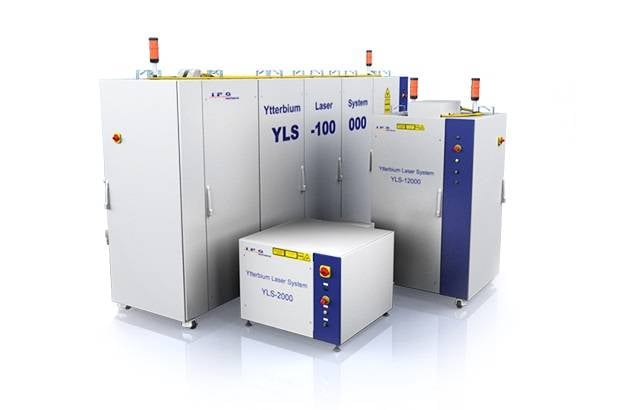
Are there other developers and manufacturers of modern high-power fiber and solid-state lasers in Russia? Judging by the commercial patterns, no.
The domestic manufacturer in the industrial segment offers gas lasers with a maximum power of tens of kW. For example, the Laser Systems company in 2001 presented the 10 kW oxygen-iodine laser with chemical efficiency exceeding 32%, which is the most promising compact autonomous source of high-power laser radiation of this type. Theoretically, oxygen-iodine lasers can reach power up to one megawatt.
At the same time, it is impossible to completely exclude the fact that domestic scientists managed to make a breakthrough in any other direction of creating high-power lasers, based on a deep understanding of the physics of laser processes.
In 2018, Russian President Vladimir Putin announced the Peresvet laser complex, designed to solve the problems of anti-missile defense and defeat the enemy's orbiters. Data on the Peresvet complex are classified, including the type of laser used (lasers?) And optical power.
It can be assumed that the most likely candidate for installation in this complex is a gas-dynamic laser, a descendant of a laser being developed for the A-60 program. In this case, the optical power of the Peresvet laser can be 200-400 kilowatts, in an optimistic scenario up to 1 megawatts. As another candidate, the previously mentioned oxygen-iodine laser can be considered.
If we proceed from this, then from the cabin of the main machine of the Peresvet complex presumably are located - diesel or gasoline electric current generator, compressor, chemical components storage compartment, laser with cooling system, laser beam guidance system. Nowhere is visible radar or OLS detection targets, which implies external targeting.
In any case, these assumptions may turn out to be false, both in connection with the possibility of domestic developers creating fundamentally new lasers, and in the absence of reliable information on the optical power of the Peresvet complex. In particular, in the press, information about the presence of a small-sized nuclear reactor in the Peresvet complex as a source of energy jumped. If this is true, then the configuration of the complex and the possible characteristics may be completely different.
What power does a laser need so that it can be effectively used for military purposes as a means of destruction? This largely depends on the intended range of use and the nature of the targets hit, as well as the method of their defeat.
As part of the on-board self-defense complex "Vitebsk" there is an active jamming station L-370-3С. It counteracts flying enemy missiles with a thermal homing head by blinding infrared laser radiation. Taking into account the dimensions of the L-370-3С active jamming station, the power of a laser emitter is at most several tens of watts. This is hardly enough to destroy the thermal homing head of the rocket, but it is quite enough for temporary blinding.
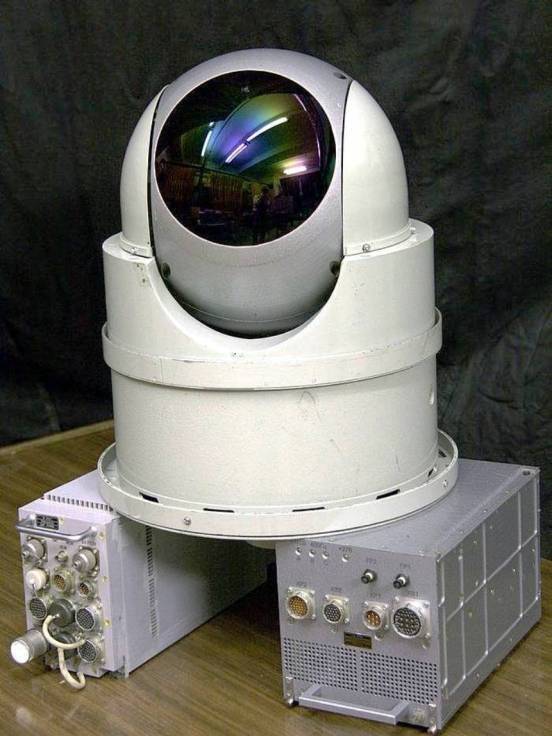
During the tests of the A-60 complex with a laser power of 100 kW, targets L-17, representing an analogue of a jet aircraft, were struck. The range of damage is unknown, it can be assumed that it was about 5-10 km.
Test examples of foreign laser complexes:
During tests of the American airborne laser complex Boeing YAL-1, ballistic target missiles were destroyed. One target missile with a liquid-propellant rocket engine, the second solid propellant, the firing range on the tests was about 100 km.
At the test site in Schrobenhausen, Rheinmetall tested an 20 kW laser facility that destroys an unmanned aerial vehicle (UAV) at a distance of 500 meters in 3,39 seconds.
The US Army Stryker armored combat vehicle, equipped with a mobile high-energy laser (Mobile High-Energy Laser, MEHEL) with 5 kW, struck a small UAV at the Grafenwehr training ground in Germany (Bavaria)
During more than 100 tests, the Israeli laser Keren Barzel missile defense system in April 2014. The system hit 90% of targets (mines, shells, UAVs) showed performance (Proof Of Concept), more than 100 tests were conducted. The power of the laser used is several tens of kilowatts.
The company "Boeing" together with the US Army tested the advanced combat laser HEL MD. Despite the bad weather - strong wind, rain and fog - the 10-kilowatt installation successfully hit several air targets at Eglin airbase in Florida. ”
The previous test of the complex was carried out at 2013 at the White Sands, New Mexico State site. Then the laser hit more than 90 mortar shells, and several UAVs. For a total of two tests, HEL MD hit 150 air targets, including 60-mm mortar shells and UAVs. The company plans to increase the power of the complex to 50-60 kW and improve the power supply system of the laser system.
[
Based on the above, we can assume:
- to hit small UAVs at a distance of 1-5 kilometers, a laser with a power of 2-5 kW is required;
- to destroy unguided mines, shells, and high-precision ammunition at a distance of 5-10 kilometers, a laser with a power of 20-100 kW is required;
- to hit targets such as an airplane or a rocket at a distance of 100-500 km, a laser with a power of 1-10 MW is required.
Lasers of the indicated powers either already exist or will be created in the foreseeable future. What types of laser weapons in the near future can be used by the air forces, ground forces and fleet, we consider in the continuation of this article.
- Andrey Mitrofanov
- habr.com, buran.ru, airwar.ru, MilitaryRussia.Ru, ipgphotonics.com, bastion-karpenko.ru, russianarms.ru, arms-expo.ru
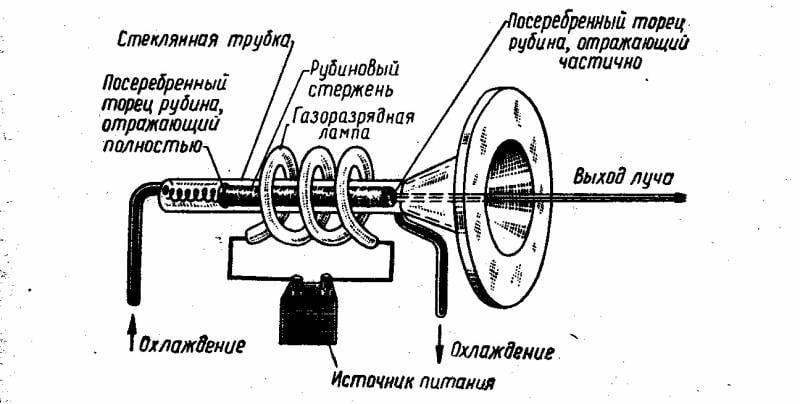
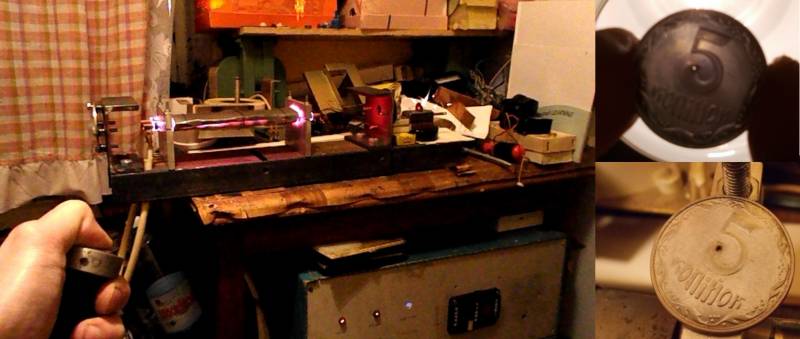
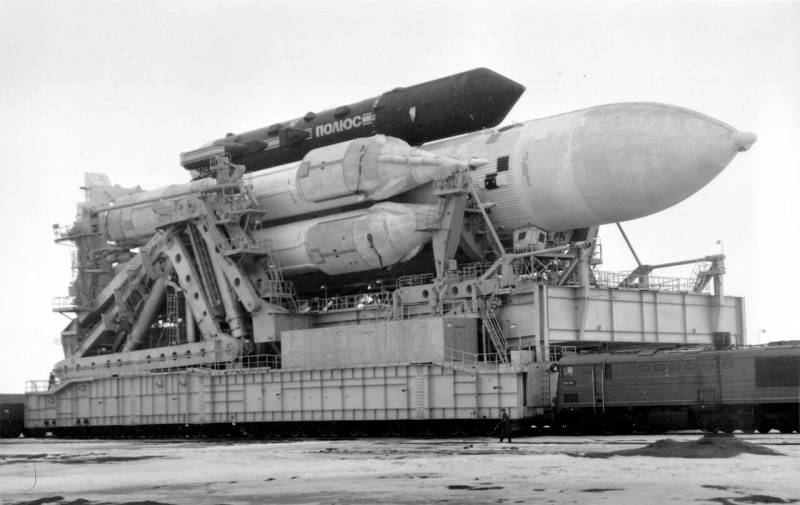



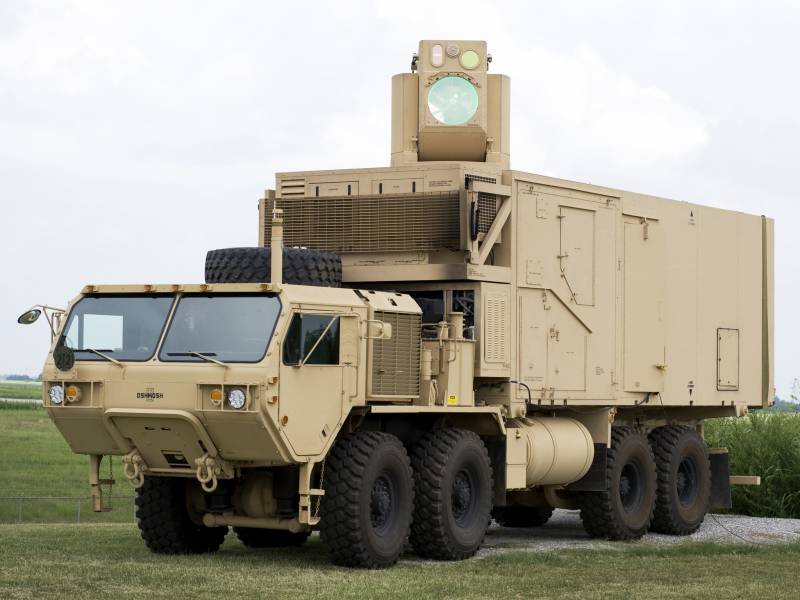
Information